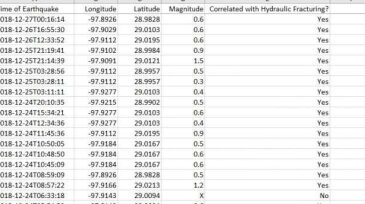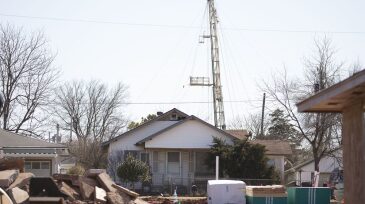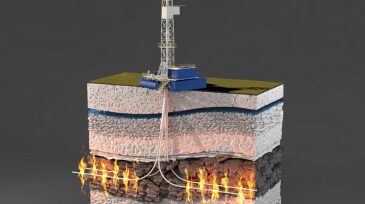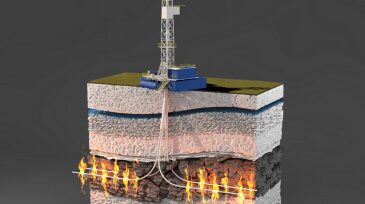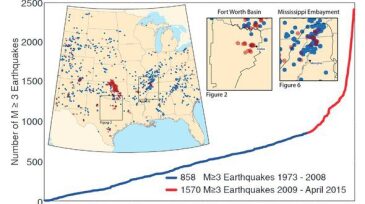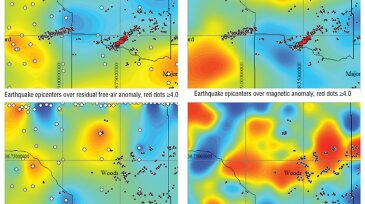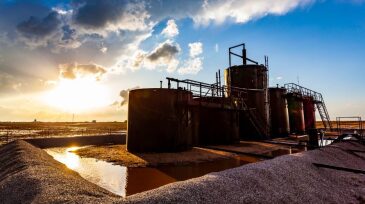earthquakes
-
This paper presents a coupled 3D fluid-flow and geomechanics simulator developed to model induced seismicity resulting from wastewater injection.
-
Earthquakes caused by hydraulic fracturing are more common in the Eagle Ford Shale of South Texas than previously thought, a new study reveals.
-
Stanford researchers have mapped local susceptibility to man-made earthquakes in Oklahoma and Kansas. The new model incorporates physical properties of the Earth’s subsurface and forecasts a decline in potentially damaging shaking through 2020.
-
Oklahoma is tightening its rules for hydraulic fracturing after studying a new cluster of earthquakes in one of the hottest US regions for drilling.
-
Stanford geoscientists have found a way to detect thousands of tiny tremors around hydraulic fracturing operations that could serve as predictors of eventual larger earthquakes.
-
Stanford geoscientists have found a way to detect thousands of tiny tremors around hydraulic fracturing operations that could serve as predictors of eventual larger earthquakes.
-
For 300 million years faults showed no activity, and then wastewater injections from oil and gas wells came along.
-
It is known that a well injecting a lot of water near a big fault can lead to earthquakes. The problem is, more often than not those faults are not known until after a tremor.
-
Top US seismic experts say they are keeping a watchful eye on ground shaking in the state as new concerns are raised in neighboring Texas.
-
Officials with the Oklahoma Corporation Commission (OCC) say steps they have taken to reduce the number and severity of earthquakes across Oklahoma seem to be working


